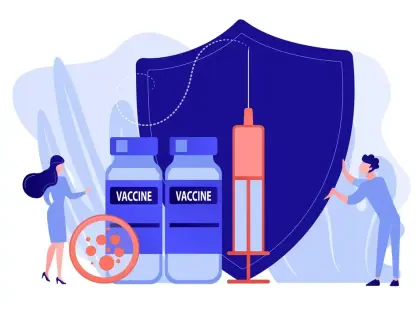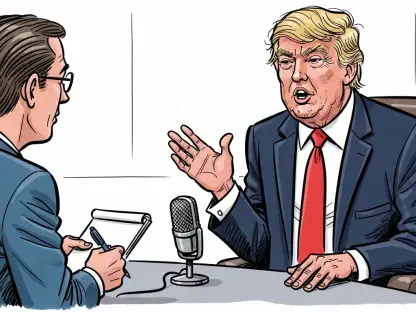In conversations about government reform and public administration, few figures are as recognized as Donald Gainsborough. A seasoned professional in policy and legislation, he leads Government Curated with a vision for thoughtful and impactful change. Today, we’ll explore his views on government efficiency, the lessons learned from past efforts, and the potential paths forward as we reflect on notable initiatives, including those led by entrepreneurial figureheads.
What inspired the creation of DOGE, and what were the main goals it aimed to achieve?
The idea behind DOGE was ambitious from the start. It was created to streamline federal operations, cut unnecessary spending, and tackle systemic inefficiencies. The primary goal was to transform how government functions by rooting out waste and fraud while implementing new technologies across agencies. The hope was to create a leaner, more responsive government, but as we saw, the plans didn’t unfold as smoothly as anticipated.
How did Elon Musk’s approach to government reform differ from traditional methods?
Musk’s approach was unorthodox, to say the least. Unlike traditional incremental reforms, he took a more radical stance, focusing on rapid changes over gradual improvements. His strategy involved sweeping cuts and deploying tech experts who lacked experience in government operations. This approach was meant to disrupt the status quo but ended up facing significant backlash from both within and outside the government structure.
What were some of the key strategies DOGE implemented to reduce federal spending, and why do you think they backfired?
DOGE adopted aggressive cost-cutting measures, aiming to save billions by firing workers, canceling contracts, and gutting programs. However, these strategies backfired largely because they overlooked the importance of skilled workers and critical infrastructure. For instance, cuts to essential personnel like nuclear-weapons experts had to be rolled back. The failure to recognize the nuance and complexity of government functions undermined these efforts.
Can you provide examples of critical cuts that were reversed, and what led to these reversals?
Certainly. One major example was the reversal of cuts to personnel at the IRS, which threatened revenue collection. Similarly, reductions in experts managing nuclear security were quickly seen as a risk to national safety, prompting retraction. These reversals were driven by practical necessities and pushback from within the administration and public concern, which highlighted the indispensable roles these employees play.
How did courts and Cabinet secretaries react to the changes DOGE attempted to impose?
Many of the changes faced legal challenges, with courts often siding against DOGE’s drastic measures. Cabinet secretaries, too, frequently objected, citing the potential risks and inefficiencies the cuts would create. Their resistance underscored the importance of strategic planning and stakeholder engagement—factors that were seemingly overlooked by the initiative’s leaders in their haste.
In what ways did public opinion impact the trajectory of DOGE’s initiatives?
Public sentiment played a crucial role. Initial optimism faded as the public experienced service disruptions and perceived reductions in government effectiveness. The backlash created political pressure, which contributed to Musk’s decision to step back. Public accountability, as it turns out, can significantly alter policy paths, especially when widespread dissatisfaction becomes apparent.
Could you elaborate on DOGE’s original savings estimates and how they were later adjusted?
DOGE initially projected savings of around $2 trillion, but these numbers were drastically inflated. As operations unfolded, it became evident that logistical miscalculations led to revised estimates of only about $160 billion in savings. When coupled with substantial incurred costs, the initiative turned out to be a financial misstep rather than the anticipated fiscal improvement.
How did the costs incurred by DOGE’s actions compare to the savings initially promised?
Unfortunately, the costs almost completely offset the anticipated savings, with some assessments indicating a net loss due to the initiative. For example, cuts to the IRS alone could result in a $350 billion revenue shortfall over ten years, showcasing how initial savings promises were overshadowed by the financial repercussions of their own productivity losses.
What specific shortcomings in government technology did DOGE identify, and what was the proposed solution?
DOGE did correctly point out the need for a technological overhaul, identifying outdated systems and a lack of integration across departments as significant drawbacks. The proposed solution involved infusing modern technology to improve data handling and operational efficiency. However, the execution faltered largely because it underestimated the complexity and resources required for such substantial tech migrations.
Why do you believe Musk misdiagnosed the root causes of government inefficiency?
Musk appeared to focus heavily on fraud and worker inefficiency as primary inefficiency drivers. However, much of the uncontrolled spending stems from uncontested entitlement programs and bureaucratic constraints imposed by legislation. The subtleties of these underpinnings were overlooked, making the resulting changes both superficial and often ineffective.
How do entitlement programs contribute to out-of-control spending more than fraud, in your opinion?
Entitlement programs, while essential, consume a large part of the budget and are structurally difficult to reform due to legislative protections and public dependency. These programs grow consistently due to demographics and cost increases, whereas instances of fraud, though problematic, represent a relatively minor financial drain compared to the vast scale of entitlements.
What role should lawmakers play in addressing the crisis posed by entitlement programs?
Lawmakers must take a proactive stance, prioritizing comprehensive reforms of entitlement structures to ensure sustainability. This could include reassessing benefits, adjusting eligibility, and ensuring that programs are efficiently run. This requires a balance of compassion, fiscal responsibility, and political will—no small feat but imperative for long-term economic stability.
How do rules and procedures mandated by Congress contribute to bureaucratic failures?
Many bureaucratic failures stem from rigid rules that limit operational flexibility. Laws and mandates can impose excessive paperwork and conservative decision-making processes, leading to inefficiencies. This inflexibility curtails agencies’ ability to innovate and respond to emerging challenges effectively.
What basic reforms have been suggested by extensive research to improve government efficiency?
Research suggests reforms like workforce modernization, greater access to technology, reduced compliance burdens, and creative problem-solving incentives. Implementing these could enhance agility and effectiveness, aligning government operations more closely with contemporary needs and expectations.
Can you discuss the significance of appointing Scott Kupor to lead the Office of Personnel Management?
Scott Kupor’s appointment signals a shift towards nuanced personnel management. His focus on tailored job cuts and modernizing staff recruitment, development, and management systems is vital. It’s an indication that personnel policies may soon better reflect the rapid changes in workforce dynamics and technological advancements.
What are Kupor’s main strategies for redesigning recruitment, development, and management systems for federal workers?
Kupor aims to introduce more precision in managing federal employment, favoring surgical, rather than wholesale, staff reductions. He also seeks to revamp the recruitment process to better attract digitally literate talent while enhancing professional development pathways to retain and upskill current employees for future challenges.
Why is it important to update the Civil Service Reform Act, according to your perspective?
Updating the Civil Service Reform Act is crucial to creating a talented and innovative workforce suited to the digital age. The revisions should foster a meritocratic environment that rewards initiative and real results over mere compliance, aligning staff capabilities and motivations with modern governance demands.
How can rewarding federal workers for showing initiative impact government performance?
Rewarding initiative cultivates a responsive and forward-thinking workforce. Recognizing and compensating actions that go beyond minimum requirements encourages a culture of proactivity and problem-solving, directly translating into more efficient and effective service delivery.
What role should staffers who work directly with the public play in improving government programs?
Frontline staffers are pivotal, as they understand firsthand how systems impact the public. Empowering them to provide feedback and suggest improvements can lead to practical changes that make programs more user-friendly and effective, ensuring that policies meet real-world needs.
How does busywork interfere with agency efficiency, and what steps can be taken to reduce it?
Busywork consumes resources without adding value, often detracting from mission-critical tasks. Reducing unnecessary bureaucratic procedures and optimizing report requirements can free up time and resources, enhancing focus on impactful activities that drive core agency goals.
What are the negative effects of the Paperwork Reduction Act, and why should it be rescinded?
While intended to streamline processes, the Paperwork Reduction Act has often stymied progress by exacerbating red tape and inhibiting service innovation. Rescinding it could ease bureaucratic constraints, allowing agencies to implement dynamic, adaptive solutions tuned to evolving operational landscapes.
Why have efforts to address these persistent issues remained unsuccessful for decades?
Chronic reform failures stem from entrenchment within existing systems, political gridlock, and insufficient commitment to long-term strategies. Overcoming these challenges requires bipartisan cooperation, realignment of incentives, and strong leadership dedicated to incremental, sustained improvement.
How can policymakers take advantage of Musk’s exit to implement serious and lasting changes?
Musk’s departure offers a crucial opportunity to refocus. With attention on the inefficiencies laid bare, policymakers can capitalize on the momentum for change, committing to strategic, evidence-based reforms that prioritize efficiency, transparency, and accountability. Implementing such changes requires a concerted effort to introduce thoughtful legislation and nurture an innovative government culture.
What is your forecast for government reform moving forward?
I anticipate a gradual but promising shift towards more pragmatic and effective government reform. As technological integration deepens and the legislative framework adapts, the focus will ideally be on enhancing responsiveness and sustainability. The key will be persistent and courageous leadership willing to navigate the complexities of systemic change.









